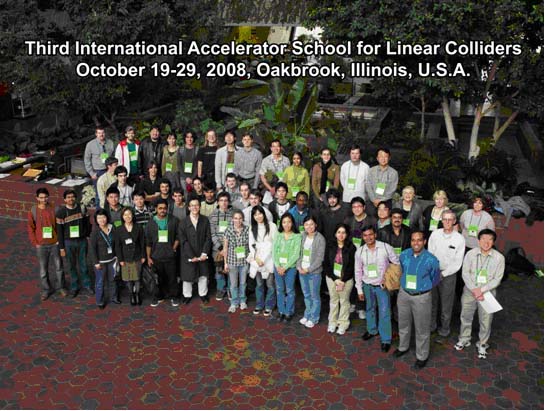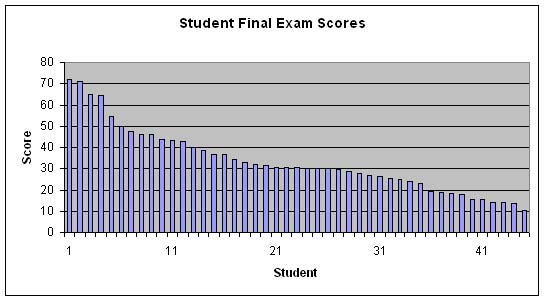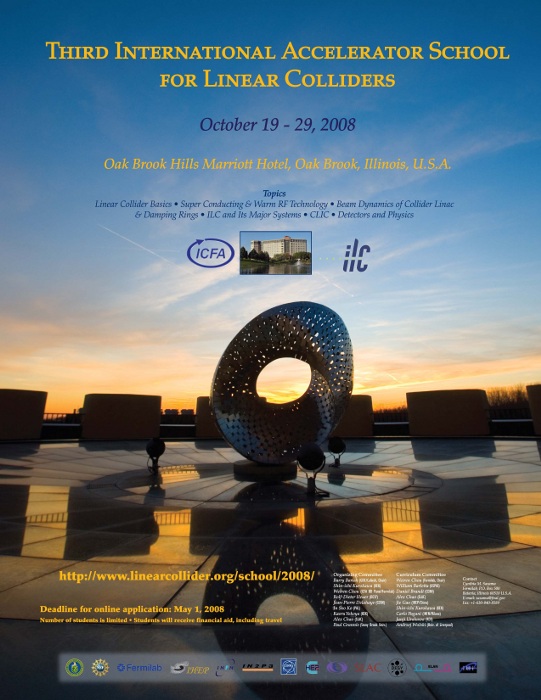Director's Corner
22 January 2009
 Barry Barish |
Training the next generation of accelerator scientists
The Third International Accelerator School for Linear Colliders took place from 19 to 20 October 2008 at the Oakbrook Hills Marriott Hotel near Chicago, Illinois, U.S.A. and was a continuation of the previous two international LC accelerator schools held in 2006 in Japan and 2007 in Italy. This year’s school was jointly organised by the ILC Global Design Effort, the International Linear Collider Steering Committee (ILCSC) and the ICFA Beam Dynamics Panel. Fermilab hosted the school. Training the next generation of accelerator scientists is crucial for the future of the field and the role and success of our series of schools is now well established.
Our school is aimed at PhD students, postdocs and young researchers, especially young experimentalists. We received an impressive 245 applications from 37 countries for the 2008 school and most of the candidates presented strong credentials. However, we could only accommodate a much smaller number of students. Through a difficult and rigorous selection process, the curriculum committee accepted 57 students from 14 countries after carefully reviewing and discussing the CVs and recommendation letters of each applicant. Unfortunately, mostly due to visa problems, twelve admitted students could not come. The forty-five students who attended the school were a talented and highly motivated group and we provided an intensive and demanding eight-day lecture experience, including a final examination.
 A group photo from the third International Linear Collider Accelerator School A group photo from the third International Linear Collider Accelerator School |
 Distribution of final exam scores Distribution of final exam scores |
The curriculum consisted of 12 lectures, homework assignments and a final exam. The lectures covered both basic and advanced topics in linear accelerators, damping rings, linear colliders and the muon collider and were given by a group of accomplished accelerator physicists, many of whom GDE members. These lecturers not only lectured during the day, but also gave tutorials and helped students with their homework in the evenings. They also created the examination problems and graded them. The final exam on the last day lasted four and a half hours. All 45 students took the final exam. The lecture slides, homework and exam problems can be found on the school web site.
In addition to regular lectures, the students paid a site visit to Fermilab. This gave them an opportunity to learn about real accelerators. Roger Dixon, head of Fermilab's Accelerator Division, presented a special lecture on how the Fermilab accelerator complex works. They also received hands-on training in the Main Control Room and performed several beam measurements and manipulations in the real machines. They visited the Wilson Hall 15th floor public display areas, the Linac Gallery, the Industrial Buildings, the CDF and D0 Experimental Halls, and the superconducting radiofrequency R&D facilities.
The exam problems were challenging and the students did well (as shown in the figure of exam scores). The top nine students were honoured at the banquet and each was awarded a certificate and a book (Handbook of Accelerator Physics and Engineering, edited by A. Chao and M. Tigner, and published by World Scientific).
Throughout the school period, the students were encouraged to make new friends since this was a once-in-a-lifetime opportunity for many of them to meet other young talented people from different origins who share the same interest (accelerators) and career goals (linear colliders). Some of the friendships nurtured at the school will last a lifetime.
Fermilab's Conference Office was responsible for the organisation of this school. Cynthia Sazama, Suzanne Weber and Jean Guyer made an enormous effort over many months on the logistics for the school, and Amanda Petersen, head of the Fermilab International Affairs Office, played the key role in facilitating student visa applications. They all did a truly outstanding job and we are greatly indebted.
The school received generous sponsorship from a number of funding agencies and institutions all over the world: US DOE Office of Science, NSF, Fermilab, SLAC, ILC GDE, CERN, DESY, IN2P3, INFN, Oxford University, University of Manchester and University of Bonn. KEK supported all 18 students from Asia. Fermilab and the Fermilab Research Alliance (FRA) covered a majority of the local expenses.
A special difficulty encountered by the school was obtaining visas for the US. Among the 57 accepted students, 24 required a visa to enter the US, and despite much advanced planning and effort, nine students did not receive visas to participate in the school. (Three other students couldn't attend because of personal reasons.) This unfortunate situation is very problematic and discourages holding such important education events in the US. A recent article published in Science (November 21, 2008, Vol 322) said US visa delays are getting worse, not better. We can only hope that the new administration in Washington DC will develop a more rational policy that is still consistent with national security concerns.
Whatever the legacy of the linear collider R&D and design effort will be, our role in training the next generation of accelerator physicists is one of our proudest accomplishments. And, in that regard, we owe much of our success to the enthusiasm, dedication, and tireless work of Weiren Chou, who has been the guiding spirit behind our school. Based on the continuing interest, demand and success of the first three schools, we have decided to continue the school in 2009. We are presently determining the actual dates, but the present plans are September 2009 near Beijing, China and to be hosted by the Institute of High Energy Physics (IHEP).
-- Barry Barish

